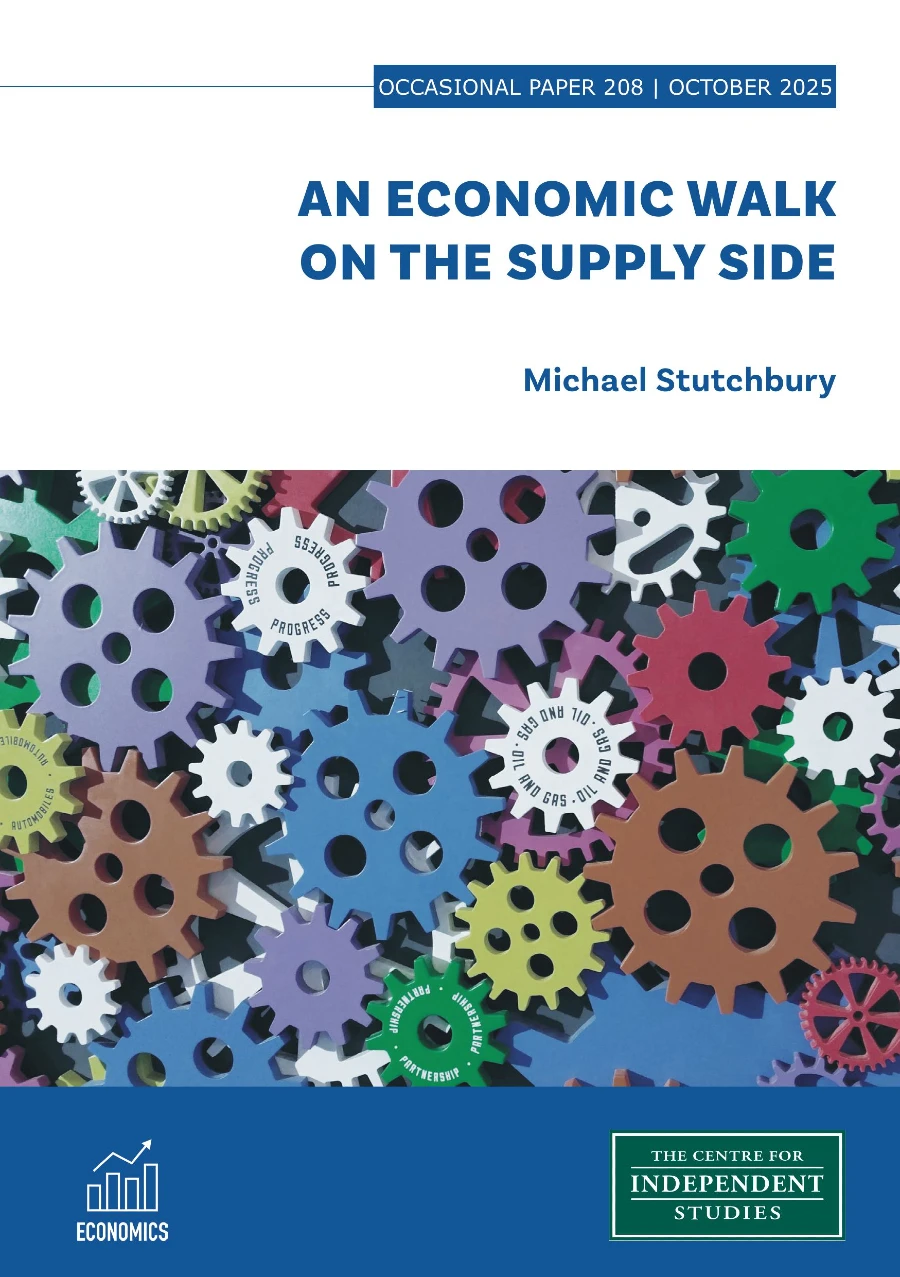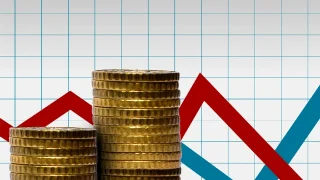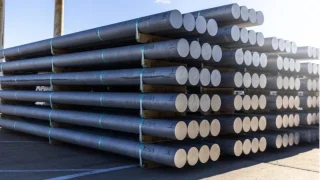
This is an edited version of Michael Stutchbury’s keynote address to the 2025 Freedom to Choose Conference
Australia is a prosperous nation fundamentally because of its people’s ability to extract and supply value from the earth’s crust — by growing plants and animals on it or by digging things up from it. That ability in turn stems from a set of institutional arrangements embodied in the rule of law that allows risk-taking individuals to secure a return on investing in the future by making some sacrifice in the present.
And in turn again, from the enterprise of entrepreneurs like Ron Manners in responding to the incentives to take a risk on these opportunities. It is to Ron’s great credit that he has reinvested some of his well-deserved returns into the community that has given him such opportunity — such as his Mankal Economic Education Foundation think tank that has sponsored thousands of students over nearly the past three decades.
Australian prosperity
The theme of the 2025 Freedom to Choose Conference is apt and paves the way for a walk on the supply side. Notwithstanding our complaints, Australia still sits among the most affluent of nations. Today, Australia’s per capita GDP, in $US terms, is 12% above Sweden, 15% higher than in Germany, 22% higher than the UK and nearly double than in Japan. Australia still lags the US on this metric, though we don’t have the income extremes of the US or many developing economies.
But the reasons for this Australian exceptionalism are not well understood. Are we higher income than the Swedes because we’re smarter than them? Do we work harder than the Germans or the Japanese?
Tarred for promoting a dismal science of tradeoffs, opportunity costs and a lack of free lunches, economists have not developed a compelling popular narrative to explain Australia’s modern success. That has left a vacuum that has encouraged complacency, entitlement and too much wrong-headed policy. Nor have they properly explained that Australia has enjoyed such relative prosperity before — only to see it slip away as we’ve fallen back to the pack of mediocrity.
That is what’s happening now. Productivity has fallen back to 2016 levels. The federal budget confronts a decade of deficits. The Reserve Bank has downgraded Australia’s potential economic growth rate to just 2% a year — down from the 3–4% of a decade or two ago.
We’re settling into a low-growth and ageing European-style welfare-state economy when Australia should be a frontier nation that attracts the world’s young talent and capital to take advantage of its opportunities.
This is happening amid the dismantling of the global rules-based trade and security orders that have supported Australia’s modern prosperity. The mashing together of trade and security policies will pose difficult questions for classical liberals as calls for new forms of protection arrive dressed in the camouflage of national security industry policy.
Sustaining this prosperity will require high quality policy choices across the board in a difficult environment and amid a more disrupted, tribal and polarised media/political discourse. Australia’s economics profession has a tradition of being practically minded. But today economists need to do much better at framing Australia’s public debate about the basic choices the nation faces.
Do we want to remain in the global top echelon of relative affluence, as Reserve Bank deputy governor Andrew Hauser has characterized our envy-of-the-world ranking? If so, what policy choices do we need to take? In making these choices, ideas do matter. That’s why foundations and think tanks such as Mannkal and CIS exist.
It’s the supply side, stupid
As the ultimate demand side economist John Maynard Keynes famously wrote:
The ideas of economists, both when they are right and when they are wrong, are more powerful than is commonly understood … the world is ruled by little else.
While Keynesian aggregate demand was one of the defining economics ideas of the 20th Century since the 1930s Depression, it is the supply side that provides the better narrative framework for the sort of policies needed to sustain Australia’s modern prosperity. While economists’ ideas may rule the world, as Keynes says, his supply-side counterpart Friedrich Hayek provides the caution over their capacity to plan the future. As Hayek said in his 1988 book The Fatal Conceit:
The curious task of economics is to demonstrate to men how little they really know about what they imagine they can design.
Rather than by bureaucrats, politicians and dictators, wealth is best created by the “separate, differing, information of millions” of economic actors, Hayek wrote. The processing of this information in the market generated the price signals that best guide supply and demand. It’s microeconomics 101. If the price of widgets rise sharply, that suggests an excess demand for widgets that would reward increased supply. But if supply is blocked by regulation, as in the supply of housing, then the price is likely to keep rising.
Hayek’s supply side principle and some economic history provides a lesson through the story of the creation of Australia’s greatest export industry. In key ways, we have been here before.
In round terms, Australia today exports close to 1000 million tonnes of iron ore a year, mostly from the WA Pilbara region. In the ground, each tonne of that buried iron ore is worthless. Dug up and transported thousands of kilometres by rail and sea each one of those tonnes of iron ore is worth $100. Scale it up by 1000 million tonnes, and it generates close $100 billion in annual export earnings from selling this essential ingredient of steel making.
Australia is an iron ore superpower. But during my lifetime, what is now Australia’s greatest export industry was banned by government decree. Many in the West have heard how Lang Hancock flew his light plane low through a Pilbara gorge rainstorm in the early 1950s and spied the rusty-coloured oxidised iron on the cliffs around him.
But the iron ore deposits that this freedom-fighting Aussie spied were not worth much back then: because the supply side was closed off. After Japan’s invasion of China in 1937, the Lyons government banned the export of Australian iron ore in anticipation of the ensuing Pacific War. That war-related export ban lasted past Victory in the Pacific and well into peace time as it became justified by a form of industry policy, like today’s Future Made in Australia.
Australia was poor in iron ore, it was argued, and needed whatever it had to feed BHP’s steelmaking blast furnaces. Yet, by 1959, 15 years after the war, a former chief economist at the Bureau of Mineral Resources, John A. Dunne, pointed to the obvious supply side fallacy.
Australia’s known resources of iron ore were so low only because there was no incentive for enterprising mining types to spend the money trying to find them: such as allowing them to export what they found to the highest bidders. Provide an incentive to prospect, Dunne argued, and the “known iron ore reserves in this region will be vastly increased”.
By this time, some observers became concerned that the post-World War Two forces of economic catch-up were waning. Riding on the sheep’s back, Australia was struggling to build the export industries to pay for the imports required to help develop economy. We were forced to draw on the International Monetary Fund to shore up our foreign currency reserves.
So, in late 1960, the Commonwealth lifted its 22-year ban on the export of iron ore, giving the Minister for National Development discretionary authority to approve the export of 50% of most deposits. It all moved quickly from there. By late 1964, the front page of The Australian Financial Review heralded one of the first big long-term iron ore deals with Japanese steel mills and producers led by Hamersley and Conzinc Rio Tinto of Australia. WA Premier Brand and Industry Minister Court said that ‘nothing prevented the companies making an immediate start on the projects’.
Oh, and what’s that other story on page one. It’s the winner of the Financial Review investment tipping competition, 24-year-old stockbroking analyst Charles Goode, who later became chairman of Woodside Petroleum. I caught up with him last just a few weeks ago in his Melbourne office. So yes, all this is within living memory.
The lifting of the iron ore export ban turned the 1960s from disappointment into a decade of economic excitement that extended into a nickel boom, the Beatles and the moon landing. The Financial Review said WA was becoming Australia’s California. It put a rocket under the previously struggling newspaper’s circulation. Australia, like now, became one of the world’s most affluent nations.
Opening up the iron ore export supply side unleased the powerful economic forces of comparative advantage, as of course explained by 19th Century economist David Ricardo. It allowed Australia to realise its comparative advantage in exploiting the earth’s crust to economically integrate into the newly-industrialising economies of North East Asia. As Donald Horne later wrote, the new affluence of mining boom Australia inflated political expectations that fed the ‘It’s Time’ phenomenon of the Whitlam government.
And, of course, that all ended in the tears of the end of the post-World War Two Keynesian consensus, the first OPEC oil shock and global stagflation of the 1970s. From global affluence, Australia’s over-regulated, over-protected and inflation-prone economy underperformed. Import protection limited the supply of foreign-made motor vehicles to just 20% of the domestic car market. Trade unions that controlled 50% of the economy’s supply of labour used their market power to lift labour costs and squeeze company profits. Per capita annual growth in real household income slumped from 3% to less than 1%. By the end of the 1970s, Singapore Prime Minister Lee Kwan Yew warned that Australia risked becoming ‘the poor white trash of Asia’.
Australia’s late 20th Century supply side revolution
In some other developed economies, the collapse of the post-Keynesian consensus led to new economic thinking in the 1970s, including monetarism to control inflation and a supply-side tax revolution under US President Ronald Reagan. Before Reagan, even much-maligned Democrat president Jimmy Carter sought to deregulate markets including for transport. In the UK, Margaret Thatcher was elected to break the power of the British trade unions.
The post-Keynesian supply-side revolution took longer in Australia. The supply side case was pushed by the Financial Review; it’s Modest Member columnist Bert Kelly; a new think tank, the Centre for Independent Studies; the forerunner version of today’s Productivity Commission, the so-called Liberal Dries such as John Hyde and Peter Shack from WA and, from Sydney, Jim Carlton and young federal Treasurer John Howard. It was Howard who commissioned the Campbell Committee that called for the deregulation of Australia’s financial system. One of the early CIS supporters brought out monetarist economist Milton Friedman from Chicago for a two-week tour.
But, through a fluke of history, Australia’s supply-side revolution was delivered by the Hawke-Keating Labor government of the 1980s, which floated the dollar, deregulated the financial system, dismantled the import tariff wall, privatised government businesses such as the Commonwealth Bank and Qantas, reduced the top personal and company tax rates and shifted the industrial relations system to enterprise bargaining that aimed to drive productivity growth from the shop floor.
As Treasurer, Paul Keating forcefully explained complex economic issues to Australians: issues such as the floating dollar, financial deregulation and lower import protection. He went on the John Laws radio show to warn that we risked becoming a banana republic — and on the Mike Walsh daytime television show to convince Australian housewives of the need for a broad-based consumption tax. As Keating said, by the late 1980s “every galah in the petshop is talking about microeconomic reform”.
Keating’s neo-liberal supply-side revolution was continued by the centre-right Howard-Costello government. It delivered a productivity boost in the 1990s. And then, seemingly out of the blue, came Australia’s China boom.
Led again by the Pilbara, Australia became the main supplier of raw materials into the blast furnaces of the biggest industrial revolution the world has seen. Australia was able to supply this hugely increased demand for our iron ore first because of the comparative advantage of our natural resource base. And, second, because of the supply-side revolution of the 1980s and 90s meant that the China demand boom did not blow up the macro economy.
A more flexible economy was able to shift resources from an uncompetitive sub-scale manufacturing industries such as car making to mega-scale, globally competitive and higher margin mining, such as for iron ore. As a result, from early 1990s to around 2012, Australia experienced an unprecedented two decades of uninterrupted economic growth in which per capita household incomes increased by close to 75%. Uniquely among comparable economies, Australia sailed through the global financial crisis without a recession.
Since the iron ore price peaked at $US180 a tonne in 2011 and 2012, however, Australia’s modern prosperity has stalled and drifted lower. Australia is still an affluent nation. But the political process has become much more about squabbling over how the economic pie is shared out rather than on growing a bigger pie for all.
Repeating the story of the 1960s and 70s, annual growth in household real incomes has slumped from close to 3% to not much above 1%. Australia’s national debate needs a credible Keating-esque narrative of why this is happening. Yet economists have not even developed a widely-accepted narrative about what caused Australia’s sharpest inflation outbreak in a generation — in large part because both sides of politics, the Treasury and the Reserve Bank all played a role in causing it.
Australia’s post-pandemic inflation was mostly caused by the massive stimulus of government payments and cheap central bank money pumping up aggregate demand that spilled over the economy’s disrupted supply lines. The result of demand exceeding supply was higher prices. It was nothing to do with supposed supermarket price gouging, as the politicians sought to suggest. Again, the key constraint was the supply side.
Here’s the main takeaway: it’s an echo of the 1970s
Today is an echo of the 1970s, as Australia is drifting and in need of a new supply-side agenda to preserve the modern prosperity we’ve come to take for granted. As mentioned, the Centre for Independent Studies was formed in 1976 in response to the need for a form of the supply-side agenda that created the Australian affluence we enjoy today. Coming up to 50 years later, the CIS and others — especially economists — need to do it again. Amid the similarities, today’s supply side challenges exhibit some differences with that of half a century ago.
From today’s vantage, many of yesterday’s supply side impediments appear relatively straight forward. Iron ore exports were banned, so unban them. So, until a few decades later, was the entry of foreign banks, so let them in too. The value of the dollar was fixed, as were interest rates, so let them float. Imports attracted hefty tariffs, so dismantle the tariff wall. The government ran the monopoly phone company and supplied the electricity, so open that up to private competition.
But the prosperity that this supply side revolution has delivered has given scope to Hayek’s warning about conceit of men and women.
Take the recently-announced plan to reduce Australia’s carbon emissions by between 62% and 70% on 2005 levels by the year 2035. Predictions are difficult, particularly about the future. And human ingenuity can always surprise on the upside. Yet, amid all the press releases and Treasury modelling, this target is highly unlikely to be hit given the slow progress to date on the ultimate target of zero net emissions by 2050.
Even more unlikely are the hopes that decarbonising Australia’s fossil fuel-intensive economy will turn us into a clean-energy superpower by harnessing cheaper energy from the sun and the wind. Work by the CIS energy team points to the reasons why the apparent free nature of the sun and wind does not necessarily translate into cheaper energy in people’s homes or workplaces.
The broken political promises of cheaper energy are being partly covered up by household subsidies that are financed by higher public debt. Similarly, warns economist Ross Garnaut, government underwriting required encourage new renewables investment runs “the risk of spending a national budgetary fortune to buy failure” in emissions reductions.
For energy users, the result has been the loss of Australia’s traditional cheap energy advantage. BHP CEO Mike Henry says that Australia’s energy costs are two to three times higher than countries that we are competing with and 50–100% higher than the US. That is, Australia has lost its low-cost energy advantage on which much of today’s prosperity has been built.
Australians have expressed a political preference for decarbonising their economy to help limit global warming. But this preference is colliding with the reality that it will be a costly exercise and that the promised fall in power prices will not arrive.
Garnaut points to the mishmash of low emission policies that have replaced the economist’s ideal of an economy-wide carbon price, preferably a revenue neutral version that would be used to reduce incentive-sapping income tax.
But, given the immensity of the task, it also seems to be an obvious supply side mistake to ban zero emissions nuclear power — or to have limited the development of new gas supplies in southeast Australia. Surely Australia’s iron ore export ban proved the folly of such self-imposed supply restrictions.
Hayek’s warning over the conceit of planners and policy makers surely extends to the National Broadband Network, a government monopoly wholesale network that committed taxpayers to a particular technology in an area of rapid technological innovation. To stay off-budget, the NBN is supposed to deliver some sort of financial return to taxpayers. But this has only been maintained by writing down its value by $31 billion or so.
The tens of billions of dollars of so-called Gonski public school funding were the result of a political campaign, largely driven by teacher unions which support smaller class sizes and seniority pay. As the CIS education team has shown, this massive increase in inputs has been followed by worsening school performance because of flawed progressive teaching methods.
And even former Productivity Commissioner Gary Banks has apologised for not warning of the spending time bomb inserted into the $50 billion a year National Disability Insurance Scheme, which has strayed way off its supposed purpose of helping Australians with catastrophic permanent disability. Next stop is universal childcare, a political project of the prime minister which would surely fail a serious cost-benefit analysis, particularly amid an entrenched budget deficit.
The thickets of red tape
All these conceited policies have been piled on top of something else clogging up the supply side — and more so than back in the 1980s.
It is the cumulative layer upon layer of regulation imposed on markets, business and development from the rise of environmental, safety, planning and various social concerns, from gender equality to combating modern slavery, from supposed bullying in the workplace to Indigenous songlines. We live in a political culture where, whenever a problem is identified, the answer tends to be to throw money at it, to litigate it or to regulate it.
Many of these regulations may be well-intentioned. But they also often come with costs and unintended consequences that may not be well understood. And they often get embedded in the system without a proper evaluation of whether they are doing what they were supposed to do.
Such regulation has expanded particularly in the wake of the global financial crisis or, in Australia, the Hayne royal commission into financial misconduct. Australia’s most successful international financial group, Macquarie, estimates its annual compliance burden, much of it box-ticking, at $1.2 billion.
But these ‘thickets of red tape’, as some call it, have now been exposed by the sharp edge of the intergenerational debate: the lack of affordable housing supply. Work by CIS chief economist Dr Peter Tulip has changed Australia’s housing debate away from its previous focus on demand side drivers, such as tax concessions for housing investors, and on supposed demand side solutions, such as first homeowner subsidies that end up getting capitalised into higher prices.
Tulip’s work has demonstrated that the main driver of worsening housing affordability remains restrictive planning and zoning regulations that limit buyers from making their own trade-offs and choices about the type of housing they prefer, particularly medium-density housing. Tulip points to an inelastic and even near vertical supply curve for housing, so that increased demand from a growing population translates quickly and sharply into higher prices. This is now becoming the conventional wisdom, shared by the Labor Housing Minister Clare O’Neil and the NSW Labor Premier Chris Minns.
On top of that comes the thickets of regulation, and the unproductive work rules, that mean it now takes longer to build a house than 10, 20 or 30 years ago. Young Australians are joining so-called YIMBY groups to promote housing supply. Thus, one of the results of Treasurer Jim Chalmers’ economic reform round table was to freeze the addition of new regulations under the national housing code.
But of course the supply side thickets are not confined to housing. They extend to other Labor-favoured priorities, such as the rollout of renewable energy. It’s called being hoist on your own supply side petard. There have been assaults on red tape before, but they have often been portrayed as making things easier for business, which is no bad thing, as opposed to lifting burden off people.
But lifting the burden off people is the helpful theme of the book Abundance by centre-left journalists Ezra Klein and Derek Thompson — a book about what Klein and Thompson call the American progressive left’s ‘supply side mistake’ of choosing scarcity through regulation. They write:
We say that we want to save the plant from climate change. But in practice, many Americans are dead set against the clean energy revolution, with even liberal states shutting down zero-carbon nuclear plants and protesting solar power projects. We say that housing is a human right. But our richest cities have made it excruciatingly difficult to build new houses.
In the UK, the Starmer Labour government is looking to wind back post-GFC financial regulation to protect London’s role as an international financial centre. Prime Minister Starmer has set a target of reducing the regulatory compliance burden on UK business by 25% in this term of government.
In other words, the supply side door is open. In Australia, people mostly hear economists talking about whether next month’s Reserve Bank board meeting will lift or lower interest rates and their mortgage repayments. That just maintains the focus on the short term demand side. But the economics profession needs to play a bigger role in helping Australians and the political debate to understand the source of the nation’s remarkable modern prosperity and what needs to be done to sustain it.
In the end, it must be about opening up the supply opportunities so that Hayek’s millions of economic actors can maximise Australia’s natural and human capital advantages: just like the Pilbara in the 1960s. Today is an echo of the dismal 1970s. What’s needed is a modern version of the 1980s and 90s supply side agenda that established the foundations for our national prosperity that is now slipping through our fingers in the 2020s.
Conclusion
Australia’s prosperity has never been inevitable, nor is its continuation assured. The country has risen to the top echelon of global affluence when it has embraced openness, competition and incentives that allow individuals and enterprises to unlock the nation’s natural and human capital. Conversely, when policy has stifled supply, relied too heavily on protection or regulation, or failed to explain clearly the trade-offs involved, Australia has slipped backwards into mediocrity.
The challenges of the 2020s — from energy policy to housing, from mounting regulation to fiscal pressures — echo those of the 1970s, and they demand a similarly bold reappraisal of how we approach growth. If economists can once again frame the public debate around the importance of supply-side reform, and if policymakers have the courage to act on it, Australia can preserve and extend its remarkable modern prosperity. Without that clarity and resolve, however, we risk allowing complacency and short-termism to erode the opportunities that past reforms so painstakingly created.











